#also he learned other lessons and returned to society as a more mature human capable of saving people’s lives in innovative ways
Explore tagged Tumblr posts
Text
I have realized perhaps the least meaningful thing they have in common, which is that their youth is exaggerated notably - to me - often. Marthe’s in her late twenties in Pawn in Frankincense, and all of her companions, including her younger brother and a 15-16 year old, constantly refer to her as “the girl Marthe.” Güzel refers to her as “the girl Marthe”!
Of course, most of these people don’t know her age at that point, and this isn’t a quirk of the characters as much as it’s gender dynamics/sexism shaping how she’s seen. Oonagh, significantly older than Marthe, is still a girl. Women in my own culture and time and daily life are often still girls. But sometimes I think about the beautiful catharsis of the Volos scenes and then laugh just a tiny bit at Francis reciting “I have a young sister” to his older sister.*
And then we have “the boy Will Scott,” from everyone’s perspective, in The Game of Kings, which … is fair!! He’s young! He’s learning! No matter what he intends, this is a coming of age story for him! But then you learn that the man who calls him “infant” in chapter 1 is (probably?) about two years older than him and absolutely has that information, and, actually, Richard Crawford has never been more sensible and in touch with human relationships than when he asks his brother if he’s told Will his age.
He then graduates from boyhood in the two months before The Disorderly Knights,** but in Checkmate we get the joy of Philippa, only slightly older than he was in the first book, remembering “a boy called Will Scott.”*** When you’re forever a boy to someone who knew you best when she was about 13 and you were a married man with multiple children … now that’s a legacy. *it’s true, he won’t know for a few years! But still… **ohoho, what happened in those two months? ***Philippa has many other interesting thoughts in this scene, including listing Jerott, who she and Francis just had dinner with, as another of her husband’s admirers with the qualifier “perhaps, long ago,” and later coming to the conclusion that Francis is forever in love, not just with someone else (this one is on him, too), but with her mother. What a night!
I’ve gotta appreciate the range of the Lymond Chronicles, which manifests in many ways … and one of them is that my favorite characters in the series (besides the guy himself) can be Will Scott and Marthe, two opposite people who, if they met, would probably hate each other, at first and possibly forever. And I love them both so much.
#not sure why I was compelled to make this addition tonight#again it is the kind of thing that DOES make sense but is fun to be half-baffled at#and something the two of them have in common. Sort of.#shoutout to sophosthewisebunny for talking about the Marthe half of it and Philippa’s general inability to guess people’s ages#and stripedroseandsketchpads for having wonderfully intriguing thoughts about these two#that I am still thinking about often#lymond#something i#will scott#Marthe#I guess I have a Marthe tag now because I can’t leave her out#and#what happened in those two months is that he learned everything there was to know about Lymond’s way with women#that’s how you graduate from being a boy. you learn the ways of women.#it’s textual#also he learned other lessons and returned to society as a more mature human capable of saving people’s lives in innovative ways#and also he got married#but whatever#all of these things can be true#WAIT I do know why I rambled about this tonight#it was the song#of course#oh man and this isn’t even getting into the fact that the real William Scott would/might have been about 27 in GoK#because it’s very funny but … I must believe that Dunnett was ignoring that#chaos…#lymond chronicles spoilers#oh also! Will and Mariotta must be even closer in age than Will and Francis#which …. checks out#not that age means everything etc etc#and Eloise. Oh god.
22 notes
·
View notes
Note
Do you ever feel like if you don't have kids, you're somehow failing your ancestors or perhaps denying yourself the chance to "reincarnate" again? I always have a dark inkling about it, some guilt. I just don't feel like I'd be a capable parent at this point. Maybe never? Ahhh. What do you feel about reincarnation in general? It always seemed the most natural, cyclical conclusion to me. Balanced. I want to believe some souls that are especially close will seek each other in the next life.
I think there are many souls incarnating to this planet. Many new souls excited to make their experience physical. However, I also think there are many old souls ready to cycle back to the universe. That they have experienced every axis of the physical realm (good and bad) and are ready to move on to a greater level of consciousness. When all the old souls of a particular “collective” cycle off, there will be room for new souls to incarnate. Everything in this universe has a cycle. Including the universe itself.
According to most eastern religions (Buddhism, Hinduism) reincarnation is a process where you have a cycle of experiences. The order in which it manifests, depends upon the interpretation. The common denominator in all religions that believe in the concept of reincarnation are that good deeds assist your expansion, bad deeds set you back, yet teach you valuable lessons.
The goal of the soul is to learn every possible aspect of the physical experience. They need to experience and explore every aspect of the physical realm before they can move on.
My understanding is that there are base levels of consciousness. The first and lowest being the physical. It takes 50-100 lives to experience every aspect of becoming a tangible being in the first plane. That includes plants, animals and ultimately humans (or highly intelligent beings on another planet or dimension possibly, if consciousness exists here, why wouldn't it exist there?). .
I also feel there are multi layers of reality. Things that exist that we can’t see. I have entertained the idea of a parallel universe, or unseen realms. There is more to the universe than what our limited mind can perceive. My understanding is the second level of consciousness is the astral plane, which deals with dreams. It’s where we go when we dream, and where spirits imprint gets stuck as a “ghost”. I don’t think the soul itself is necessarily stuck there. I don’t think the soul is trapped there, rather than the memory of the trauma is trapped.
This is evidence : when someone has an intense fight in a room. Even if both parties leave the space, the tension hangs in the air. You still feel it. Spirits are the same way. My sister had a spirit following her for months. She said she could feel a young girl with curly, light brown hair sitting in her backseat. It freaked her out at first, until she realized the girl was lost. My sister is a Virgo, very practical, not spiritual, always questioning. This ghost girl would not leave her alone. My sister said that the ghost started appearing she after she visited a vacant rural area with some friends. It latched on to my sister, and the ghost seemed deeply distrustful of men. She appeared frightened. My sister has a horrible feeling that the girl was killed, and her body was dumped somewhere in the vacant location my sister and her friends had been hanging out at.
My sister is not one to invent wild stories. The ghost girl was attaching to my sister, because she was in a similar situation. The ghost was trying to protect her. The trauma of what happened in a particular space, is stuck if the situation is not acknowledged. It's like an echo, or a reverb. What “ghosts” need is acknowledgment. They need the trauma to be validated. Usually after that, the trauma is released.
For example: I lived in a 3 story building in my hometown, you come in through the top and go down. On the bottom level was my mother's art studio, my own bathroom, and my bedroom. Every time I went to go up the stairs… I felt a desperate energy that seemed to scream.. “DON’T LEAVE ME!”
My grandma cleared the energy in the space with chanting while burning sage. My grandma discovered that a man had been badly injured on the property back in the 1800s before the house was built. He was unable to get back to camp . He died where our house was built, do his spirit haunted the place of his death, looking to be rescued. When I finally told him what happened, he seemed to slowly understand, sadly. Over time, he was gone. It took time, but the trauma resolved.
To be honest, no, I do not feel like I am failing my ancestors. We are in a period of excess, in general. There are too many people on this planet, and honestly, young/baby/infant souls. The soul ages go as follows:
Infant soul: survival Baby soul: the rules (follower) Young soul: power “what you have is what you are”Mature soul: heavy drama (AIDS, Cancer, deformity, autism)Old soul: tying off loose ends. Returning to source.
Infant souls are animals, they are first incarnate. Everything is new to them. It’s all about survival. They operate from how they can survive and that is it. Human beings that operate from this place are in the higher levels of infant soul. This is in tribes, or 3rd world countries where life is short. They learn purely to survive.
The next level is baby soul. Baby souls are sheep. They are all about learning the rules of their environment. They Lear babe rules and abide by them adamantly. They are not complex individuals. They are dull and suited for service work. They learn these levels of hardworking blue collar experience, and at the higher levels question/move on. Within each soul age are levels. Their ate seven levels with each soul level, seven is the historically magical number.
Young souls… We live In a primarily young soul society: bigger better, faster, stronger, prettier. For the young soul, life is a showcase. It’s all about appearances, success, possessions, dominion.
Mature souls deal with all the heavy karma’s they have acquired in earlier lives. This is the time you will have AIDS, get cancer, have some rare disease, lose all your loved ones, have careers fail etc. this life is about loss, rebirth and resilience. It’s the time of suffering, so you can release and move into new states of being.
When you become an old soul, you are tying off loose ends of the tapestry. You know that life is short, -and you try to rectify or fix all your issues with lady souls. Often they won’t, because their lesson is gl be angry, just as yours wax in another life. They are looking for resolution and catharsis just as much as they are.
Younger souls, they think they understand the plight of the old soul, but they don’t. They don’t understand the journey.
Have you ever thought to consider that there are too many people on this planet? And that maybe you were not meant to procreate? Honestly, there is nothing wrong with that, and it doesn’t diminish your chance of reincarnating at all. It just means this particular incarnation chose not to have that experience. Nothing wrong with that. You will still cone around, and in another life you will have a child, or perhaps you already had one in another life and want to experience the opposite in this life.
7 notes
·
View notes
Text
Animated Life Lesson #1: Understanding
Understanding (noun): an agreement regulating joint activity or settling differences; a state of cooperative or mutually tolerant relations between people

In honor of the new season airing on Netflix this week, our first animated life lesson-understanding-will be discussed through its extensive portrayal in Dragons: Race to the Edge.
How to Train Your Dragon and its sequel are some of my favorite movies of all time. The stories are epic, the characters are complex and interesting, and there are a ton of unique and amazing dragons. The world building is fantastic, the animation is well done, and the soundtrack is one I can listen to over and over again. (This one and this one are especially good for keeping me motivated when I’m running.) Furthermore, the themes of friendship, sacrifice, and bravery are all thoroughly explored, giving children and adults alike characters to cheer for as they explore the dangers of their world and come into their roles as dragon riders.
Because I am so in love with the movies, I was ecstatic to learn that there is an animated series for this franchise. DreamWorks Dragons is set between the first and second films and serves as a narrative bridge between the two theatrical releases. The first two seasons, subtitled Riders of Berk and Defenders of Berk, respectively, aired on Cartoon Network, and while these seasons see the discovery of new dragons and new dangers, explore the complications of the new friendship between Vikings and dragons, and establish plenty of new character development, it’s the newest incarnation of the show that really shines, easily on par with the films in terms of story and visuals.
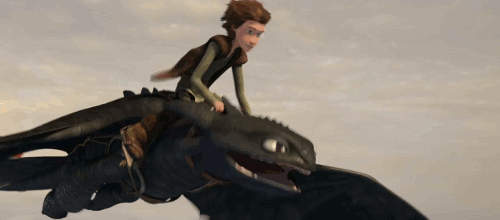
Dragons: Race to the Edge is produced by Netflix, and the fact that Netflix was willing to take it over says something about the greatness of the show and the franchise. Netflix has a good record (at least so far) of producing well-written and entertaining original content, and Race to the Edge is certainly no exception. This newest offering in the series is set just a year before HtTYD 2, and Hiccup, Astrid, and the other riders have certainly changed over the past few years.
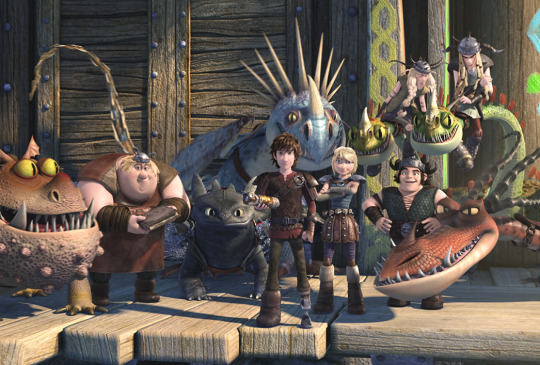
But at their core, they remain their same original Viking selves. There was no attempt to drastically redesign any of the main cast—or any of the secondary cast, either—to gain more viewers, and that makes the show feel like a true continuation of the films. Just as importantly, the feelings of friendship between the riders are still intact and still realistic, with the riders spending as much time bickering with one another as they do fighting the true villains. More importantly, though, the friendships between the riders and their dragons are stronger than ever.
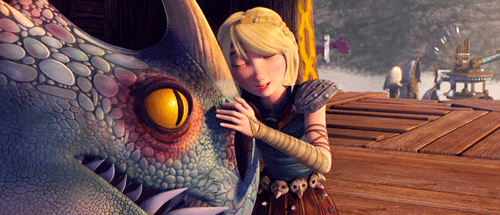
Although there are a lot of things to love about these films and the show, the relationship between Hiccup and Toothless is the real heart of this whole story. It’s more than a boy-and-his-dog type of story; Hiccup and Toothless are as close as brothers, with each willing to step into the line of fire to save the other. They’ve saved each other’s lives countless times, and the love between the two of them is beautiful to see. At the risk of sounding cheesy, their relationship is still just as magical as it was at the beginning, when Hiccup chose to defy his entire way of life to save a dangerous dragon and in return earned a lifelong friend. If not for the feeling of sameness—if not for Hiccup being able to understand Toothless’s feelings of fear and helplessness in that pivotal moment—things wouldn’t have changed. Sure, Hiccup would’ve been praised by his tribe, but that would’ve only changed things for him during his time. Instead, his desire to understand dragons changed the lives of every Viking in his tribe for now and for forever. It was Hiccup’s willingness to see things from a different point of view and to try to do things in a new way that changed his entire world and earned him the undying loyalty of one of the world’s fiercest dragons.

Hiccup’s drive to learn about dragons as more than just the enemy was unprecedented for a Viking. All knowledge of dragons up to that point was based on how best to defeat them without getting eaten or burned to a crisp. But Hiccup wanted to understand dragons for the unique and fascinating creatures they truly are. Maybe it was because he was ostracized by his village, maybe it was because he was nosy, maybe it was a bit of both, but Hiccup’s actions demonstrated a maturity and a wisdom beyond his years, and it has certainly turned out well for him.
In RttE, Hiccup continues to encounter new types of dragons, and although his first purpose is always to ensure the dragon’s safety, the second is to learn about the creature. He still hasn’t lost that desire to learn about dragons, and it’s become second nature to study new dragons as thoroughly as possible; this allows Hiccup and the other riders to protect themselves from any potential threats but also allows them to help the dragons to not only survive everything from other dragon attacks to hunters and natural disasters, but to thrive. The riders build structures, relocate threats, and generally care for the dragons they encounter, and in doing so, they continue to see that humans and dragons aren’t all that different.
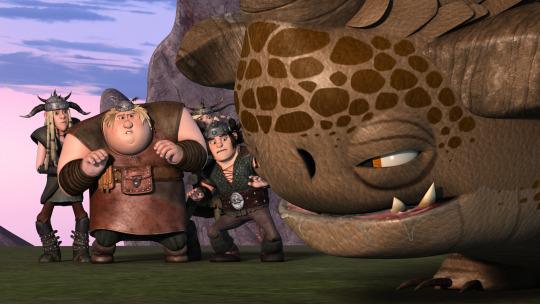
Sure, they’re physically different, and they’re capable of drastically different things, but all they really want out of life is safety and companionship. It’s easy to see these similarities between the riders and their own dragons, but it also becomes apparent as the riders become more accustomed to dealing with wild dragons, who are typically only causing trouble because their home or their loved ones are threatened. It’s interesting that it takes a group of teenagers to understand that dragons aren’t the enemy when generations of Vikings refused to see the truth, and now that same group of teenagers is essentially reinventing the culture. Because of their understanding of the dragons, Hiccup and the other riders have not only cemented their place in Viking history, they’ve managed to create peace after centuries of fighting.
Years of warfare have also created an interesting dynamic within Viking society that calls for another kind of understanding: an understanding of physical disability. Dragon attacks are vicious, and there are numerous Vikings who are shown with missing limbs as a result. Gobber, as an example, is missing both a hand and a leg as the result of battles with dragons, and yet he’s one of their fiercest warriors. Bucket and Mulch are likewise missing hands, yet they’re successful fishers and farmers. Toothless loses part of his tail thanks to his capture at the hands of Hiccup, but once he’s able to fly again with Hiccup’s help, he’s just as dangerous as ever, perhaps even more so because now he has someone to look out for him and help him perform more amazing attacks. And of course, Hiccup himself has lost part of a leg, the price he paid for defeating the Red Death.
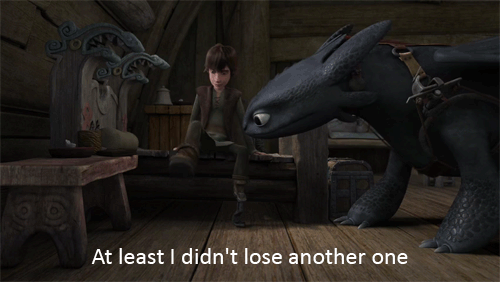
Since Hiccup’s loss comes at the end of the first film, the impact is not well-explored at the time. However, it’s clear that the loss is seen by the other Vikings as a badge of honor, and Hiccup even jokes about being able to redesign a better replacement leg than the one Gobber has made for him. It’s a drastic change from most stories about physical disability, where the loss of a limb or of function is seen as tragic and, to some degree, problematic. But to the Vikings, it’s just a fact of life. Having been injured in a dragon attack is par for the course, and it’s great that these characters get to be ‘normal’ without having to conform to the notions of society. For the Vikings, being disabled is normal, and their society reflects that.

We get to see Hiccup’s reaction to the loss of his leg throughout the seasons of the television show. Not only has he upgraded Gobber’s replacement, he’s specifically designed his leg to work with the attachment on Toothless’s tail, and on top of that, he eventually modifies it to be a multipurpose prosthetic, with the ability to switch between a walking version and a riding version that fits better with Toothless’s tail, as well as a bladed version for walking on ice. Although I’m sure he’s not glad that he lost his leg, Hiccup has been able to use his ingenuity to design a prosthetic that works for him just as well as his real leg ever did. Probably better, in fact, since there are numerous times throughout the show where Hiccup’s metal leg manages to save his life, either directly or through using it as a weapon. Likewise, Gobber has adapted a number of different attachments for his hand, allowing him to switch out tools and weapons to make his work easier. It’s quite fun, actually, to see the different limbs these two can design and create, and it allows them to deal with their missing limbs in ways that are both useful and creative.
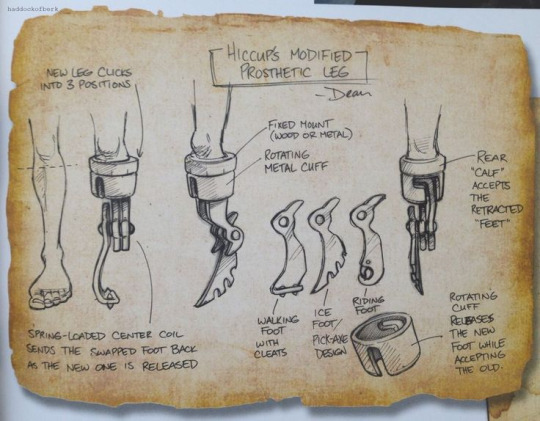
Hiccup’s creativity doesn’t just apply to his work, it also applies to how he lives his daily life and how he interacts with his friends. The other riders are all fun and individual characters, even the twins, who are rarely separated, and Hiccup finds creative ways for each of them to utilize their strengths and their hobbies to work as a team. There’s an implicit understanding between each of the riders that they have different strengths and weaknesses, and while they may not always like the reality of their abilities, they always trust Hiccup to lead them in such a way that everyone plays an important role. That doesn’t mean that there isn’t grumbling or teasing about anyone’s abilities. Snotlout in particular spends a fair amount of time making fun of Fishlegs for being a nerd about new dragons, but he’s always (begrudgingly) grateful for Fishlegs’s knowledge when they’re under attack. Snotlout also seems to always find ways to bring up Hiccup’s missing leg, whether it be through bad puns or corrections on comments, such as when Astrid implored the other riders to put themselves in Hiccup’s shoes, to which Snotlout corrected:
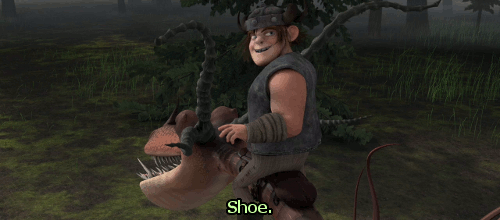
Even though it’s annoying, the comments are nothing more than teasing between friends who truly understand and appreciate one another. Everyone realizes that they wouldn’t even be dragon riders without Hiccup, just as everyone realizes that they wouldn’t have become such successful riders if they weren’t able to look past each other’s differences and learn to work as a team. There’s an understanding that even though they may irritate, aggravate, and enrage one another from time to time, they’re still a team, and they couldn’t do all the amazing and helpful things they do if they didn’t have each other. It’s being able to understand that everyone has their flaws just as they have their gifts that allows the riders to function so well together and be the people who save both humans and dragons.
Dragons: Race to the Edge is easily one of the best animated shows offered today. There’s enough stupid humor, exciting dragons, and amazing flight scenes to keep children interested, while adults will enjoy the deeper themes and messages along with the exciting dragons and amazing flight scenes. This show, along with the other seasons of Dragons serve as the perfect bridge between the first and second films, seamlessly continuing the story and introducing new characters and dragons that let us explore the world more than the movies would allow. As I mentioned before, the show is great from a visual standpoint, as close to the films as any television show I’ve ever seen, and the score manages to incorporate the main themes from the film while also introducing lovely new pieces. What’s more, much of the main cast lent their voices to the show, including Jay Baruchel as Hiccup and America Ferrera as Astrid, which further lends to the authenticity of the series. But it’s truly the fact that the show has managed to capture the truly capture the relationship between Hiccup and Toothless, that undefinable understanding between a boy and his dragon, that makes the series as successful as the films. There may be new adventures, new enemies, and new friends, but it’s this connection at the core of the story that makes it perfect.

Check out season 4 of Dragons: Race to the Edge, premiering on Netflix this Friday!
#how to train your dragon#how to train your dragon 2#dragons race to the edge#dragons riders of berk#dragons defenders of berk#dragons#dragon riders#hiccup#toothless#night fury#astrid#stormfly#berk#vikings#a boy and his dragon#understanding#animated life lessons#lessons from television#tuffnut#ruffnut#barf and belch#fishlegs#meatlug#snotlout#hookfang#saving people#riding dragons#this is berk#disability#cooperation
11 notes
·
View notes
Photo

What Is Pornography - Part 4 - PORN AND OUR RELATIONSHIPS - Part 18
18. Porn is only fantasy: it doesn’t affect our real lives.
For years, the debate about media’s effect on real-life behavior has been in the spotlight. What role might violent media play in our lives? Can what we see on screen, no matter how obviously made up it may be, actually influence how we behave? How does exposure to violence affect our maturity? How does it affect our society?
These questions carry over into the debate about the effects of pornography. Does pornography alter human behavior? Does it really make a difference? Do images actually have that much power over us? The resounding answer, proven by countless studies, is that media does affect how we think and how we behave.
The advertising industry is proof that media has a powerful influence over our thoughts. Companies invest billions in advertising campaigns in the hopes that their thirty seconds of great graphics and catchy jingles will be enough to get you thinking about, buying, and then talking about their products. Their products might not be much different from a competitor’s, but the goal of their advertising campaign is for you to choose theirs. Companies spend an estimated $180 billion on advertising each year. Executives are literally banking on the fact that advertising brings customers. Media changes minds.
You may be thinking, “Well, sure, that’s advertising. It’s not the same as pornography. Pornography is different. After all, pornography is not real. It is fantasy, and we know that. It is just harmless fun and safer than engaging in risky sexual activities.”
It is true that most pornography is scripted and heavily edited, but that does not lessen its effects on the viewer, his body, and his relationships.
To understand the full extent of pornography’s power to alter our sexual behavior, we have to understand how the human mind learns. Humans engage in a process called observational learning. We learn to do something by watching it being done.
In one of the first studies of observational learning, children watched an adult act aggressively toward an inflatable punching bag — throwing it in the air, hitting it with a mallet, and sitting on it. When given an opportunity to play with the same punching bag, the children who had witnessed the adult’s aggressive behavior tended to copy it.
Observational learning can be seen in how pornography use affects the behavior of its viewers. In Norway, a group of researchers has recognized the teaching power of pornography. They are calling for reform in the porn industry for the purpose of teaching safe sex. They believe that average pornography consumers cannot be taught about sex using traditional methods (i.e., a sex education class) and that promoting “safe sex” pornographic films may be an effective way of normalizing safe sex. If educators believe that pornography can teach safe sex, then it is certainly capable of teaching other lessons —including aggression.
Pornography’s ties to sexual aggression have been the subject of many studies, articles, and debates over the last several decades. Some studies claim to prove a link, others claim to disprove it, and still others say that both pornography use and sexual aggression are affected by a man’s natural tendency.
Perhaps the most telling of all these studies is one from 2000 entitled “Pornography and Sexual Aggression” by Malamuth, Addison, and Koss. In preparation for their research, the authors reviewed past studies on the issue.
One part of their study focused on the effect of pornography on males who were low-risk for sexual aggression and males who were high-risk. It found that high pornography use is not necessarily indicative of high sexual aggression in the low-risk population. There was little difference between the aggressive tendencies of low-risk men who used porn somewhat frequently and those who used it very frequently, although there was a notable difference between men who had never or seldom viewed pornography and men who viewed it frequently. In the case of men at high risk for sexual aggressiveness, however, there was a relationship between porn and sexual violence. The high-use men in this group “were much more likely” than the low-use men to have engaged in sexual aggression.
Viewing pornography can affect not only a man’s sexual aggressiveness but also his commitment to a relationship. Researchers at Florida State University studied college students who admitted to habitual pornography viewing. Half of the students were asked to give up pornography in any form; the other half were asked to give up their favorite food. At the end of the trial, the students were asked about their commitment to their relationships. The correlation might seem strange, but researchers found that the students who reduced or eliminated pornography consumption were much more committed to their relationships than the students who had continued to view pornography while giving up food.
What caused the difference? It could have been the lack of pornography’s influence, or it could have been the increased time available to spend with a partner. After all, every moment someone is not viewing porn is another moment he has to engage in real human interaction. Some porn users report that they watch up to fifteen hours of pornography a week. That is a significant chunk of time lost.
Pornography’s effects reach beyond our ability to form and to maintain meaningful relationships. Pornography can also affect how we view sex and members of the opposite sex, particularly how men view women. In a study on the sexualization of women, researchers analyzed covers of Rolling Stone magazine. They discovered that women are not only sexualized but are hypersexualized at an increasing rate, often featured naked and in sexually suggestive poses. In 1960, 11 percent of the cover images were classified as hypersexualized. By contrast, since 2000, 61 percent of the covers featured hypersexual images, a majority of which were women. To quote the authors of the study:
The accumulation of sexualized attributes in these images leaves little room for observers to interpret [the women] in any way other than as instruments of sexual pleasure and visual possession for a heterosexual male audience. Such images do not show women as sexually agentic musicians and actors; rather, they show female actors and musicians as ready and available for sex.
The problem with such mainstreamed images is that they feign to represent women as a whole. In her book Female Chauvinist Pigs: Women and the Rise of Raunch Culture, Ariel Levy states that picturing women in such a way gives rise to the message that being a sex object is the only way to be a woman. “What we once regarded as a kind of sexual expression,” says Levy, “we now view as sexuality.” In other words, hypersexualization sends the message that “real” women are ready and available for sex. It holds up unrealistic standards for women and plants improper expectations in the minds of men.
Another effect of pornography is its impact on the human body. With the increasing availability of pornography has come an increase in the number of cases of sexual performance issues, such as erectile dysfunction (ED), among young men. Problems that were once found mostly in older men are now found in otherwise healthy men in their twenties and thirties.
Here’s some of the data on this phenomenon. A 2012 Swiss study found that 30 percent of males ages eighteen to twenty-four have some form of ED, and a Canadian study published a couple of years later reported that 27 percent of sixteen- to twenty-one-year-olds have this problem. An Italian study reports that young men under forty are actually 10 percent more likely to have ED than men over forty. Compare this with data from 1992, when only 5 percent of guys ages eighteen to fifty-nine had ED. Why the sudden uptick in ED among healthy young men? Doctors believe that porn is a major reason. One study from Cambridge University in 2014 asked men with ED about their use of pornography. Researchers reported that 60 percent of the subjects (average age twenty-five) said they had ED problems with sexual partners but not with porn.
Lawrence Smiley, a physician who specializes in men’s reproductive health, says:
I see men almost every day in my sexual dysfunction practice in exactly this situation. They have developed over time, the inability to easily get a good solid erection with their partner and sometimes find it difficult to ejaculate with their partner. I advise these men to dramatically cut out the pornography they watch and after a few months their erections and ability to ejaculate with their partners almost always returns to normal for them.
Online porn viewing is, among other things, novelty-seeking behavior: constantly clicking, greedily keeping multiple tabs open, always looking for the next girl, the next sexual buzz. A real woman — no matter how attractive — is only one woman. A man this obsessed will have difficulty finding her arousing.
Can the fantasy of pornography affect our everyday lives? The answer seems to be yes.
0 notes